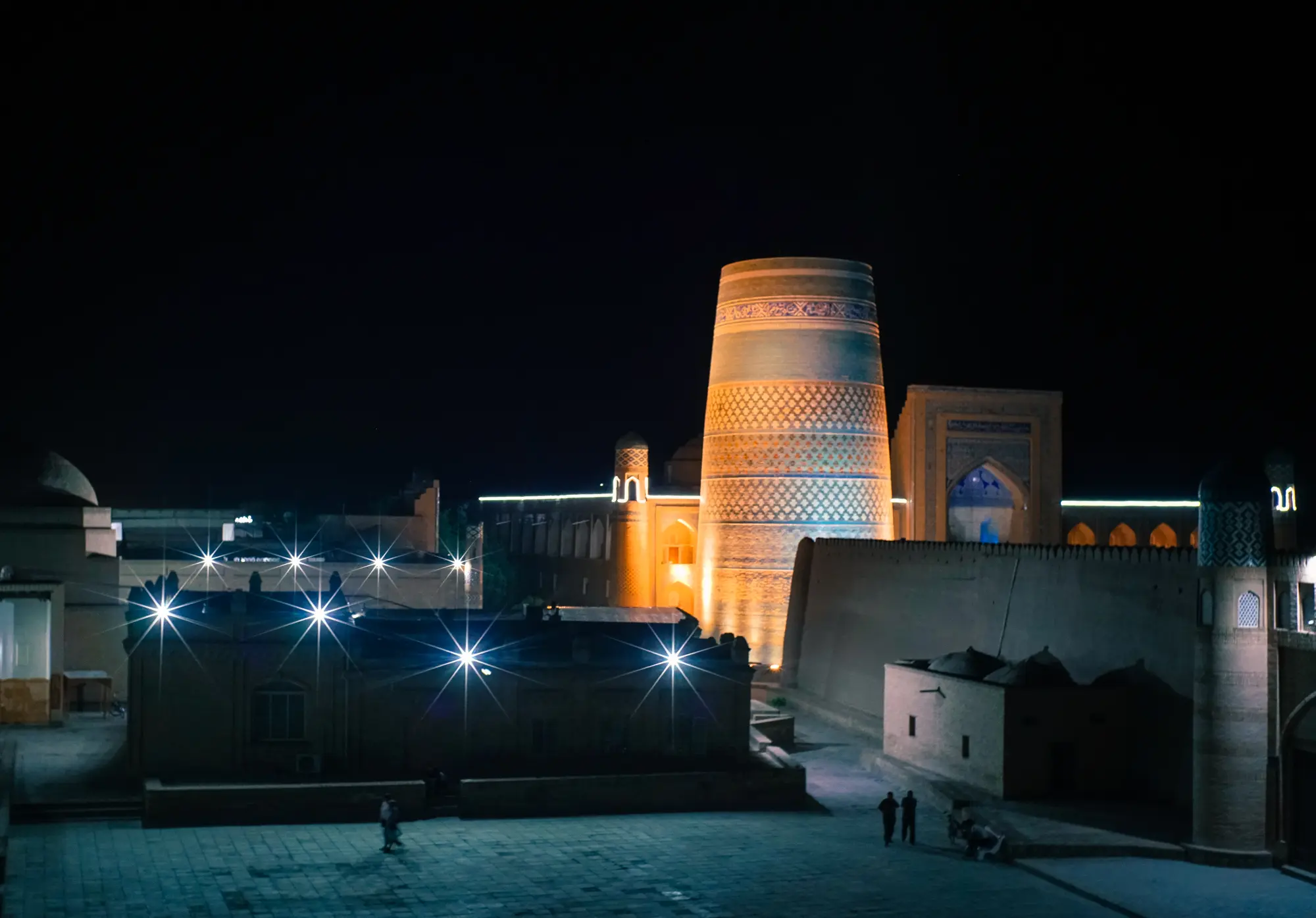When mentioning Asia, too many people, especially in North America, automatically mean East Asia – China, Japan, Vietnam, Korea. That’s only a fraction of the whole enormous continent, however. For anyone actually interested in the Asian history, the attention should be inevitable drawn to Central Asia, or the so-called “The ‘Stans” – the 5 former Soviet republics of this vast and diverse region.
I personally consider Uzbekistan to be the crown jewel of the ‘Stans. Not only it’s big, it’s the cradle of the Central Asian civilization which plenty to show for it. The country has blended Islam and secularity quite well, it’s safe, it’s full of sights, and most importantly – it’s pretty easy to visit nowadays since the visas for most Western countries have either been waved or drastically simplified.
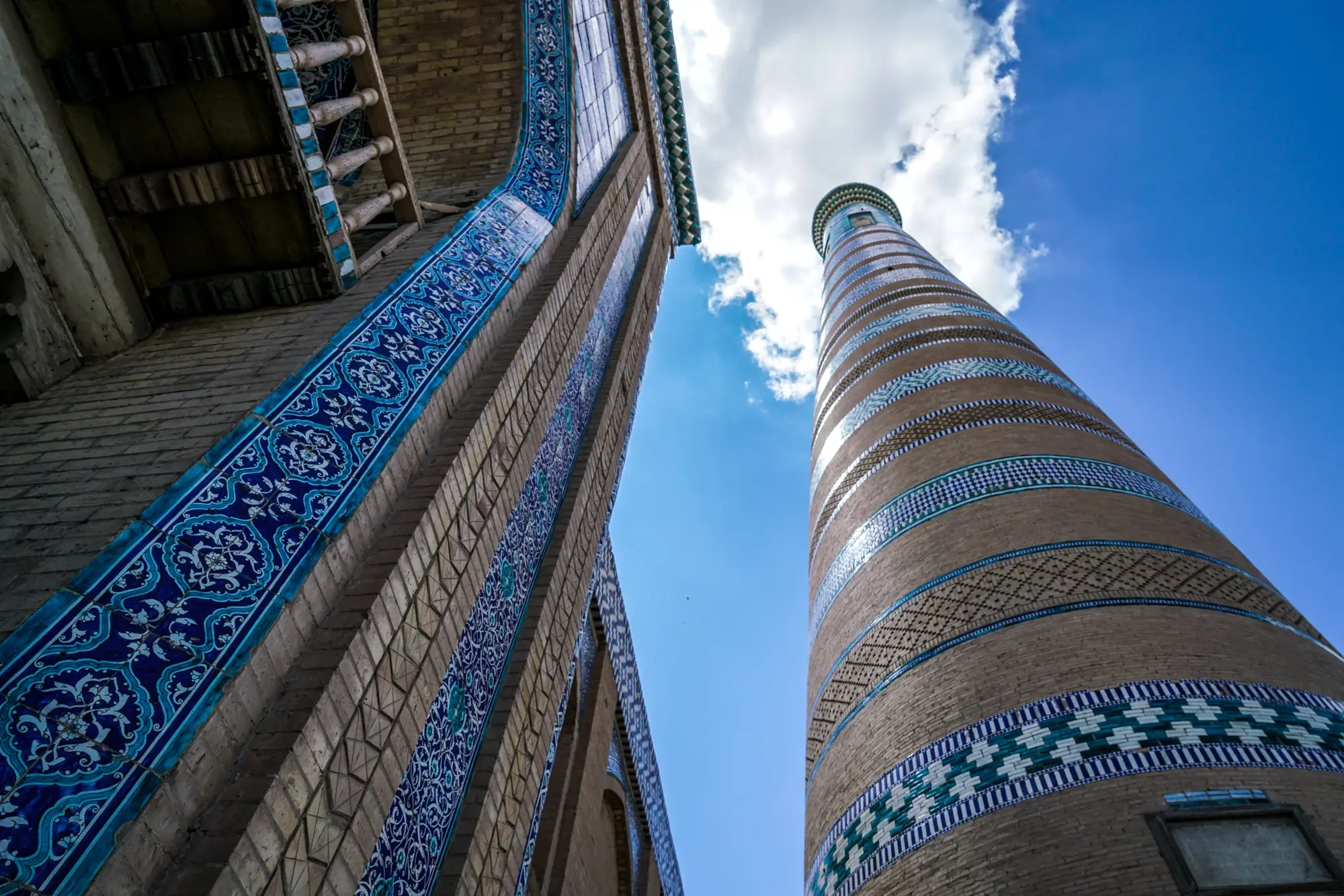
If you are doing several ‘Stans in one trip, make sure you realize that Uzbekistan is going to be your best cultural destination. Nature-wise, there are certainly sights, too, but for the mountains, there’s nothing in Uzbekistan that compares to the neighbouring Kyrgyzstan of Tajikistan, and for the desert sights, you are probably better off with Kazakhstan or Turkmenistan. But for the city-based oasis culture that has lasted for centuries, this is the country to visit.
Depending on your flight itinerary, you can start and end your trip in Tashkent, but I would recommend doing it linearly so that you don’t have to backtrack or miss important sights. My advice is to either start or end your trip in Urgench and accordingly, either start or finish in Tashkent. That way you can do the quintessential Uzbekistan route: Khiva – Bukhara – Samarkand – Tashkent. The first three are a must if you come all the way here, and Tashkent, while not as interesting as the previous three, might be hard to miss anyway.
Khiva
They might be polar opposites, but in a strange way, Khiva kept reminding me of Venice. Not in geography or culture, of course, but by the virtue of being a living age-old town that is basically an open-air museum in its entirety. Khiva is small, so that you can easily walk all the way around the historic core in just over an hour or so. But it also has a maze of alleyways dotted with minarets, small museums and madrasas, or Islamic schools, either abandoned or converted into museums.
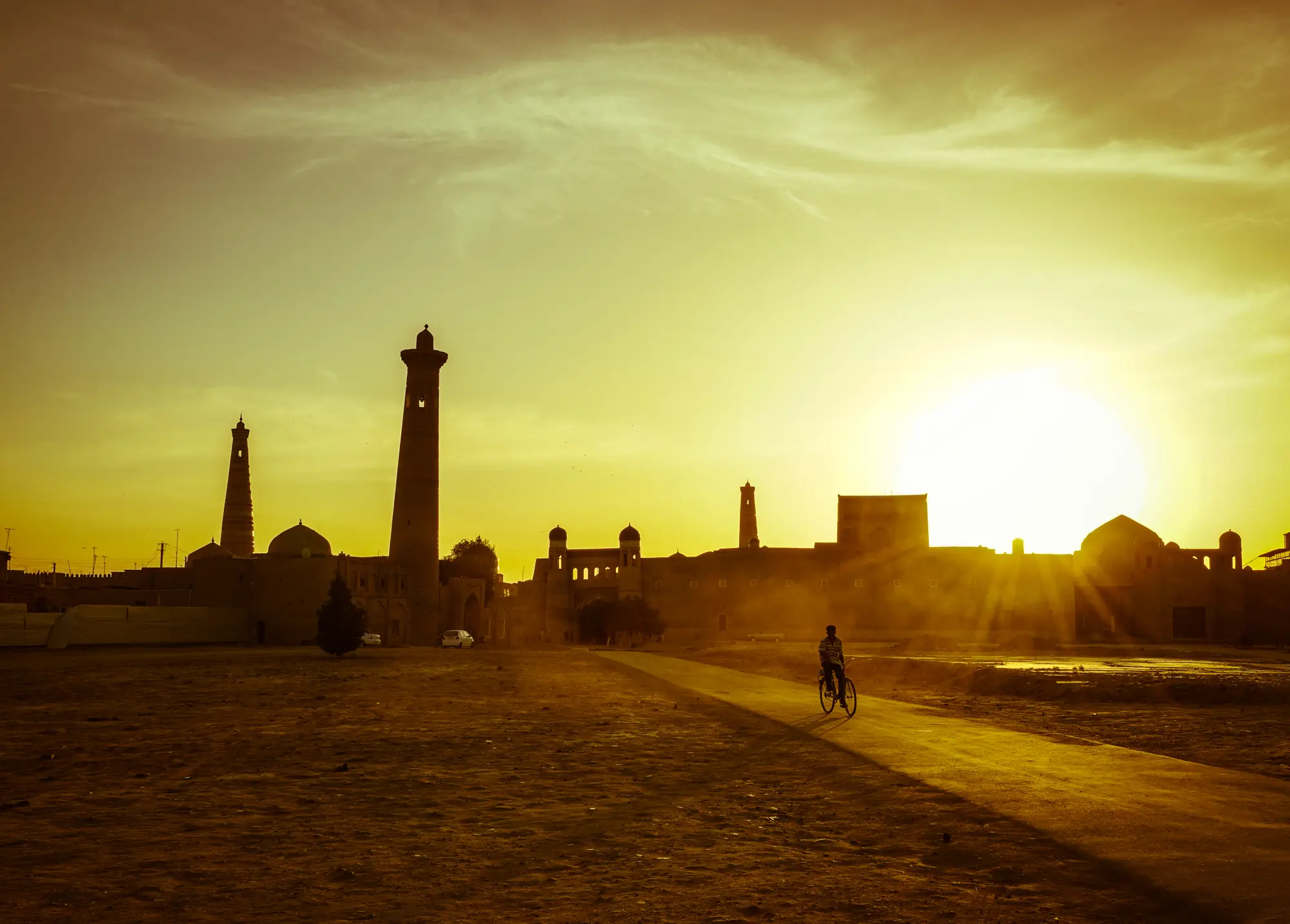
Khiva is great for photography, within or just outside the city walls. You do have to buy a ticket to see the interiors of most places, but if you want to just roam around, while technically you are supposed to have a ticket, you don’t have to buy it – there are 2 gates where they will check for it and at least 2 others where they don’t. If you do buy a ticket, you might as well opt for the ones allowing you access to the walls and the Islam Khodja minaret. What the ticket does not cover is the excellent Pahlawan Mahmoud Mausoleum, which is the only thing I do recommend paying extra for. The tilework of the interior is just outstanding. All in all, allow 2 days for Khiva, although if pressed, you could cover most of it in a day. However, if you do stay an extra day, you can do an excursion of the few ancient fortress sights in the desert around Khiva extending into the nearby Karakalpak region of Uzbekistan. While little is left from these mud-built citadels, some are quite impressive if you use a little imagination. If you can find a small group, I do recommend this detour. Solo, it’s probably not worth paying the driver’s fee.
Bukhara
Probably the most famous city in Uzbekistan, Bukhara is actually predominantly Tajik in its ethnic compound. That is Central Asia – ethnicities and languages are so intertwined, you might not guess where you are if teleported there. But Russian is universally spoken in this dignified historical city, so if you have any command of it, it will greatly help you.

While Bukhara has its share of actual sights – my favourite being the Kalyan minaret pictured above – it’s probably the best city in Uzbekistan, if not all of Central Asia, for street photography. Roaming the streets and alleyways of the Old Town, you are likely to get lost and then found only to be lost again. If you really are lost, you can always ask local kids of which there are usually plenty playing in the streets.
I also highly recommend visiting Chor-Bakr necropolis just outsie Bukhara for some old Islamic tombs, a flock of pedigree doves and a few resident peacocks that you will probably hear before you see them.
Overall, I’d recommend 2-3 days for Bukhara.
Samarkand
With the name as evocative as Samarkand, any traveler worth his backpack would probably have it on his bucket list. And sure, it’s a great destination, an easy 2 hours by train from Bukhara (book at least a day ahead).
The city is bigger than Bukhara and quite different. Still largely Tajik, this is also a significantly Uzbek city. Where Bukhara is reasonably small and walkable, Samarkand is substantially bigger, but its areas of interest are four-fold and you could cover all on foot, albeit sometimes walking wide city avenues instead of cozy medieval streets.
The first one is Gur-Emir Mausoleum, and probably the least exciting of the bunch. It’s an impressive building all right, but being heavily restored, it somehow lacks the excitement you want to feel when entering a structure from the 15th century. Samarkand is the city of Amir Timur (Tamerlane), and this is his tomb, so it’s still a must-see place in the city.
The second one is the famous and unmissable Registan complex (pictured in the header). It’s truly a sight to behold, especially when lit up at dusk – one of the most harmonious and impressive architectural ensembles in the Islamic world. Yes, it has been restored as well, but it’s more about the fine balance of the three buildings comprising it than anything. And of course, you can roam around or even climb one of the minarets. A tip: you are technically supposed to buy a ticket to walk in the ensemble, but you can walk through the back free of charge and nobody will see you.
Not far from Registan is my favourite building in Samarkand – Bibi Khanym mosque complex. Wonderfully unrestored, and absolutely huge, this to me is the gem of Samarkand. I believe restoration works are in progress though – and it might be interesting to see what this mosque, reminiscent of the largest mosques in Iran, will look like as a result.
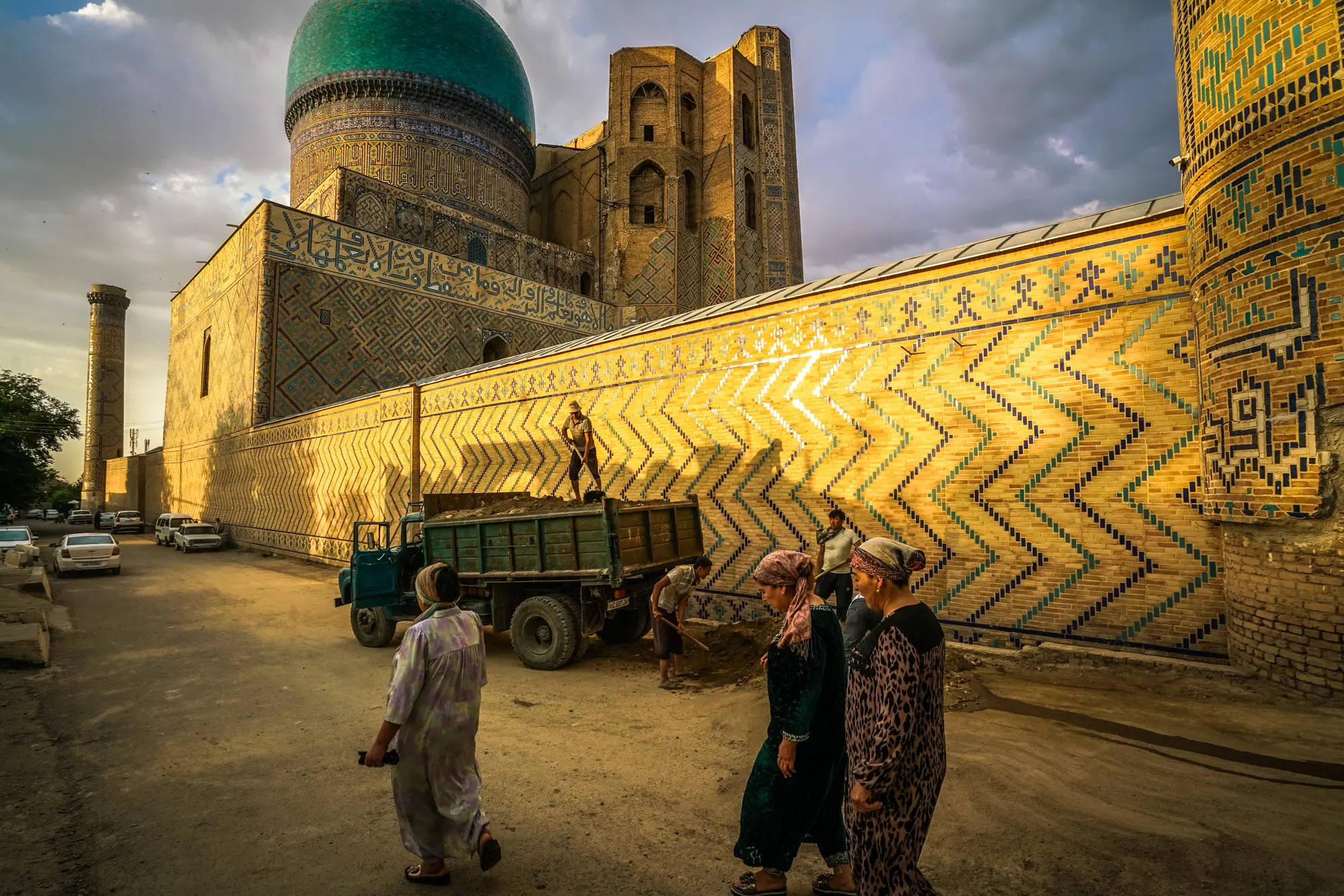
Finally, there is the Shahi-Zinda complex of mausoleums. It’s more interesting outside than inside, but still worth a walk here and the entrance fee (which again, you could theoretically avoid if you walk in from the cemetery in the back). I like its setting on the hillside and the significance it bears in the history of Central Asia.
As I mentioned, majority of Samarkand’s sights were heavily restored after wars and earthquakes of the last 100 years. In one of the madrasas of the Registan complex, there was a photo exhibit showing how it was in 1930s and it looked almost completely ruined, therefore what you see is 80-90% restored, mostly in the 20th century, except the Bibi Khanym mosque. Thus, decide for yourself how much attention you want to pay to this glorious Silk Road city. Samarkand is a worthy destination, no question; but whether you spend a day or 2 or 3 here, depends on how much you dig the overall vibe.
Tashkent
As the capital city of Uzbekistan, Tashkent is hard to miss, even though it’s nestled at the edge of this weirdly-shaped country. It’s an agreeable enough city. It’s old town is nothing much to write home about and neither is the market; however, it does have a few interesting mosques and madrasas. My favourite spot was Moyie Mubarak Library museum which houses the world’s oldest Koran.
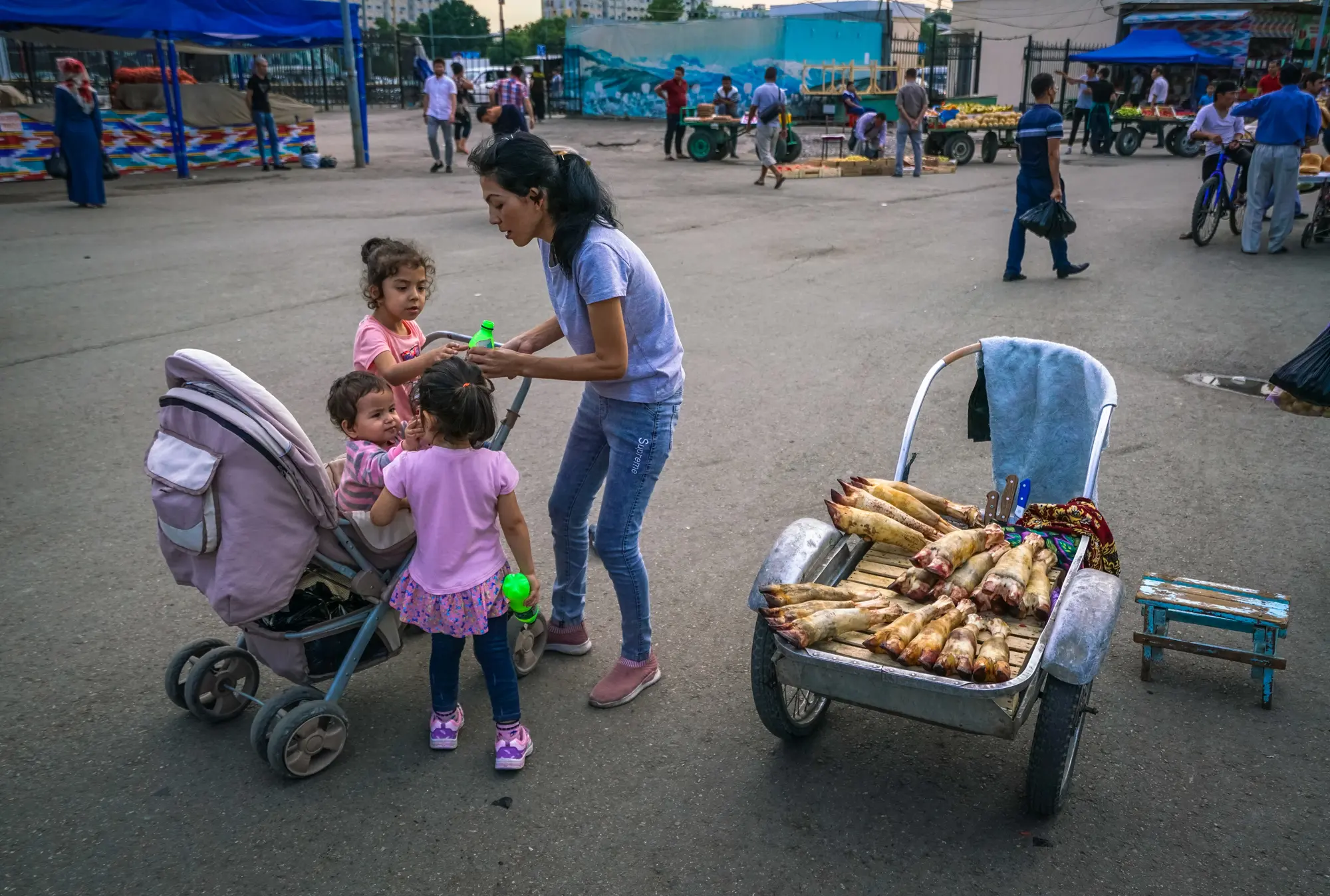
But Tashkent is where you will get a chance to see the modern Uzbekistan – from the brand new white marble mosques to Soviet-era metro that is quite convenient to nightclubs and five start restaurants and hotels. If that’s appealing to you, then it’s worth staying 3 days or so; otherwise, it can be skipped or visited for a day if you have a flight leaving from Tashkent.
Other Places
A huge chunk of Uzbekistan’s population resides in Fergana Valley – a relatively small region squeezed between Tajikistan and Kyrgyzstan. This is the bread (or fruit) basket of the country, and this is where many historical paths were crossed by all the Central Asian powers that be. I personally did not go there as the area does not have many well-known sights, but if you are not on a time budget or are crossing overland to either Kyrgyzstan or Tajikistan, it might be worth it to spend a couple of days here to see the raw, un-touristy Uzbekistan.
Uzbekistan also has its mountains, called Chimgan. There are a few resort-type places to stay here, but these mountains, impressive for many countries, pale in comparison to what you would see in Kyrgyzstan or Tajikistan, so if you are going there, you can safely skip it.
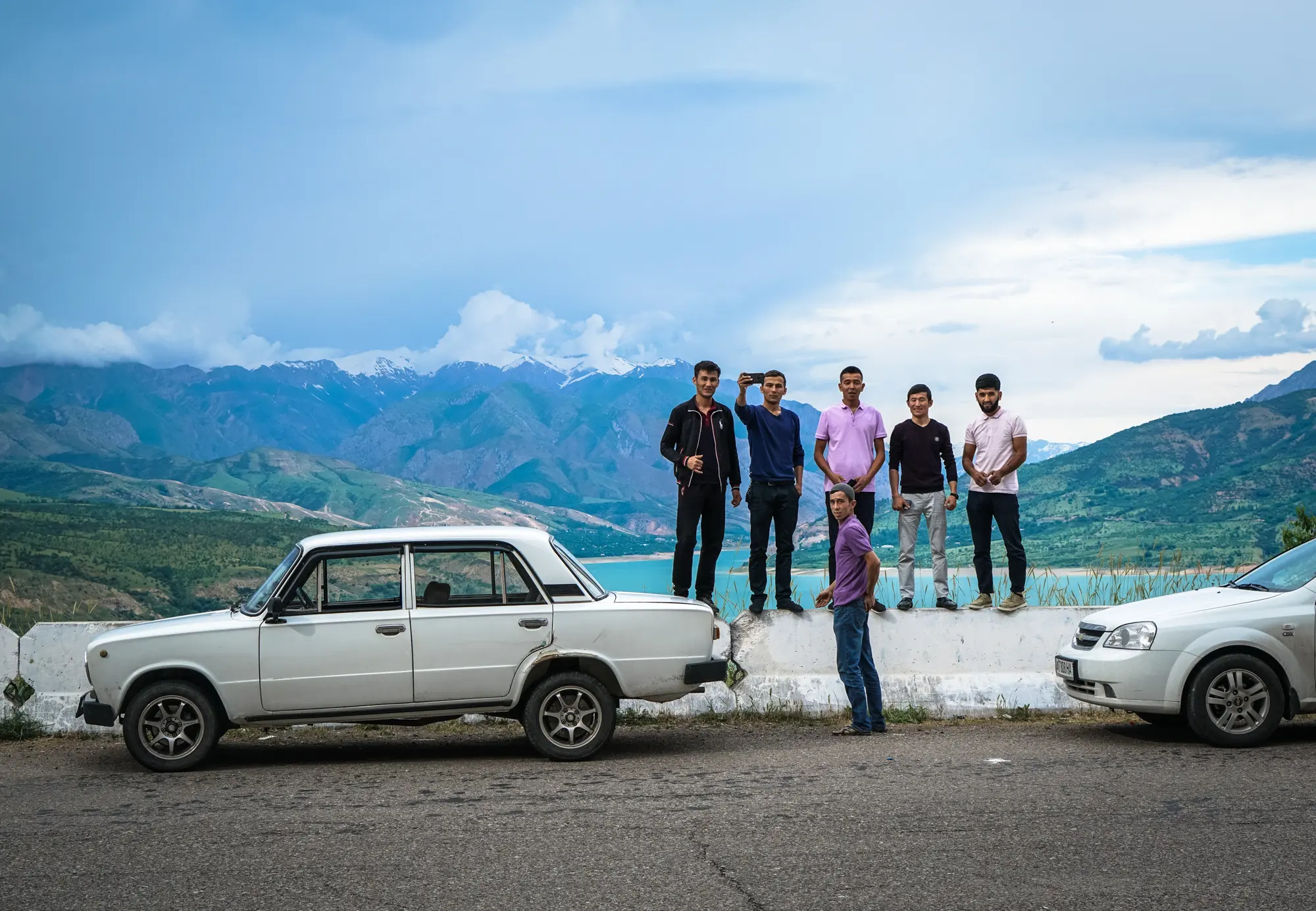
Karakalpakstan is the vast desert area in the west of the country that once was a home to half the Aral Sea (until the latter all but disappeared). You can visit its capital, Nukus, and/or take a tour of the former seaside towns that are eerily abandoned now. I have personally not gone there, as it is a time-consuming detour, but it could make for some interesting photography if you are taken to the right places. I don’t believe this is the area to do independent tourism unless you are fluent in Russian and have local connections.
I will not write much about the Uzbek food as you can do a big separate post on it and this is not a food blog 😉 But you can almost never go wrong with plov, the national dish of the country and prepared in different ways depending on where you are. Being a moderately Islamic country, you will not have any problems getting alcohol in tourist cities of Uzbekistan even during Ramadan.
All in all, I recommend it for a 10-12 day visit.
